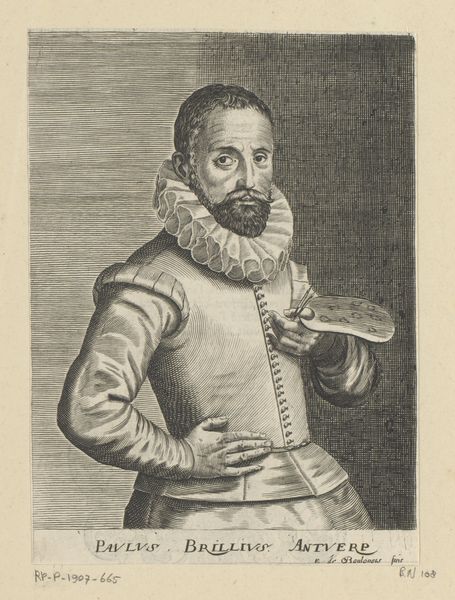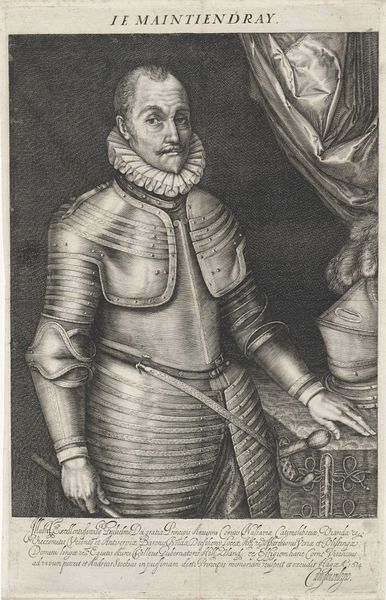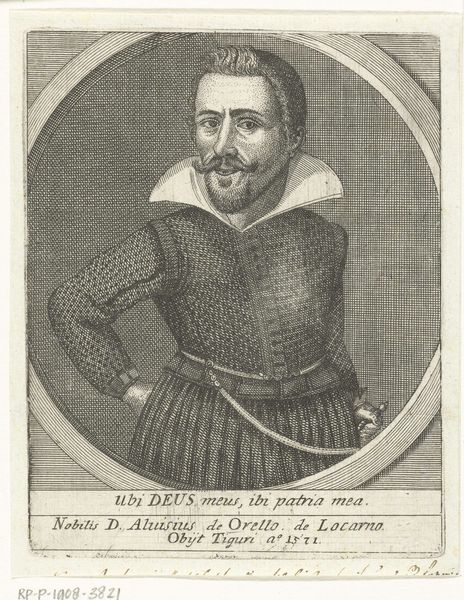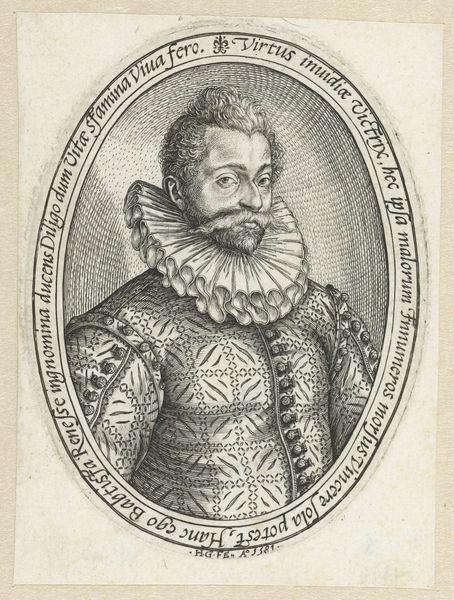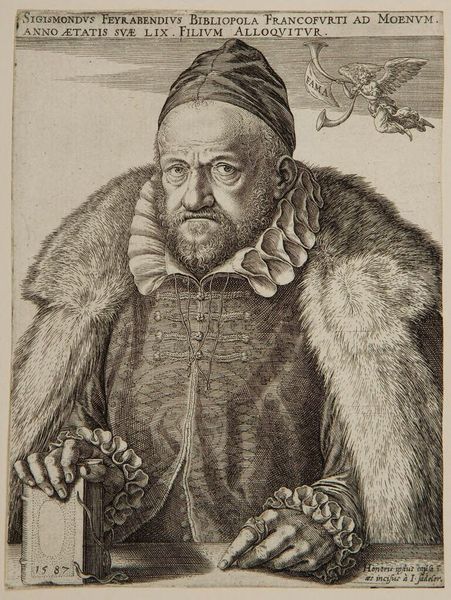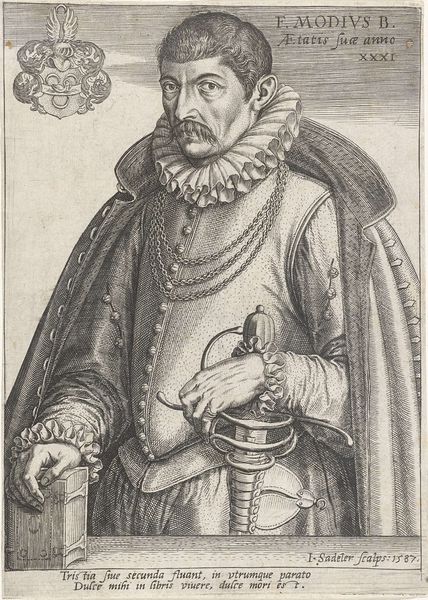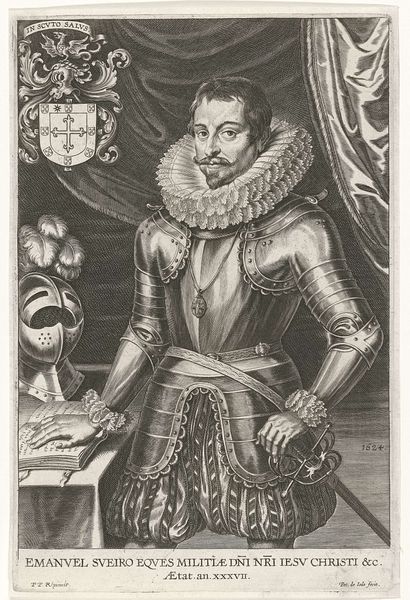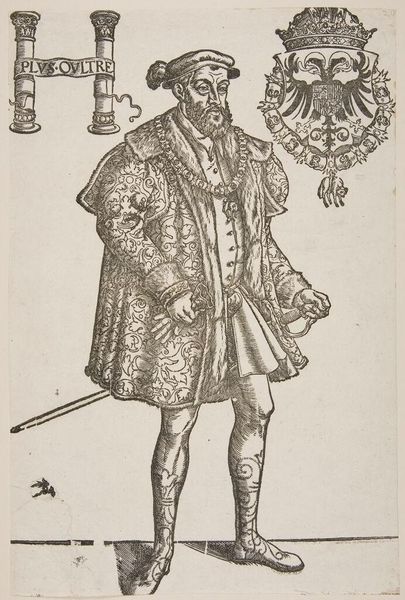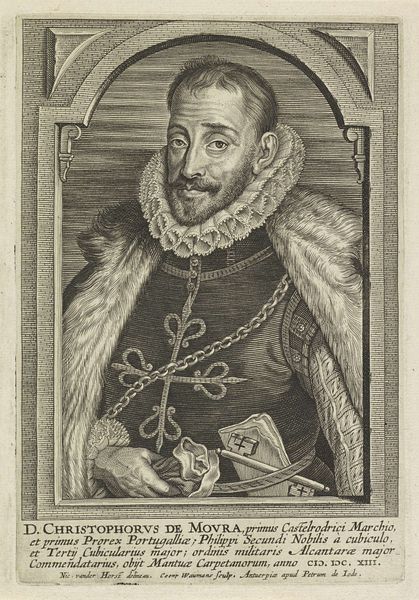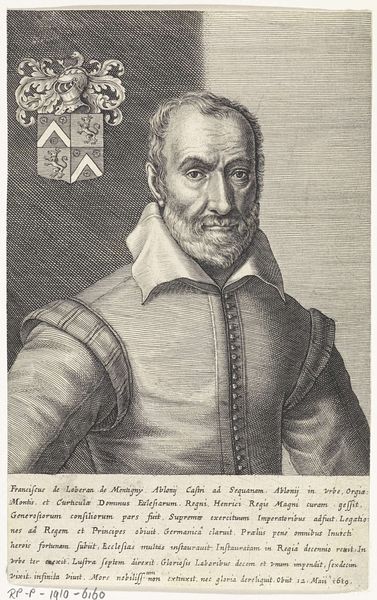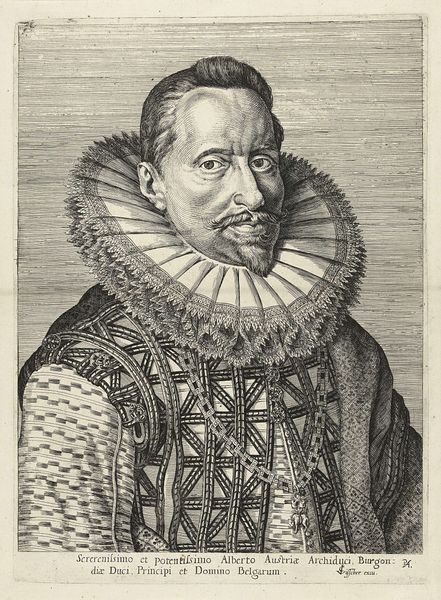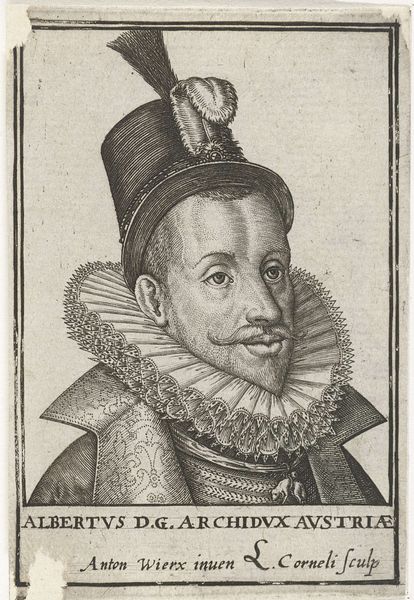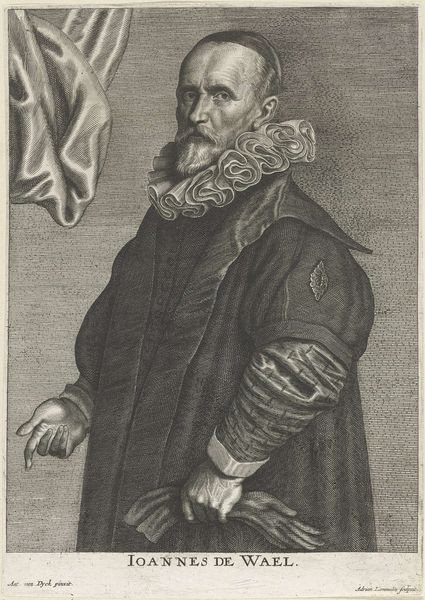
print, engraving
#
portrait
#
baroque
# print
#
old engraving style
#
portrait reference
#
pencil drawing
#
engraving
Dimensions: height 209 mm, width 125 mm
Copyright: Rijks Museum: Open Domain
Curator: Let’s turn our attention to this engraving from 1610, "Portret van Paul Bril," by Hendrick Hondius I, which resides here at the Rijksmuseum. Editor: Well, immediately, I'm struck by the formality and intensity in the sitter’s expression. And the lines—so precise, capturing the textures of the ruff and the almost metallic gleam of the doublet. It really does suggest a careful process, right? Curator: Absolutely. This work is more than just a likeness; it’s a carefully constructed presentation of the artist Paul Bril and his cultural position. Notice the text at the bottom, praising his skill in depicting landscapes, his influence on the pontiff’s artworks and other patrons in Tyrio… It’s positioning him as a pivotal artist who appeals to the elite. We must remember that Bril made his name painting landscapes in Rome, effectively innovating and shifting what "landscape painting" could even mean during the Baroque period. Editor: The palette he holds so prominently really underlines that identity and artistic labor too, doesn’t it? Its inclusion also reminds the viewer about materials, pigments and other things Bril, a "landscape" painter, engaged with when depicting the land. And look at his dress. All those buttons – somebody made all of those – somebody probably stitched that whole thing by hand! Curator: Exactly. He is being displayed in conversation with labour. Moreover, consider the era’s religious tensions, the Reformation. Art becomes a powerful tool for asserting status and skill. These portraits did vital political work for their subjects, whose class power relied upon being able to commission artistic portrayals of this type. Editor: And thinking about the engraving process, we’re witnessing a transfer of skill, labor mediated through a plate and press, resulting in many impressions of the painting circulating, for a wider market maybe. It underscores this early-modern economy and artistic identity through craft and production. Curator: In the end, by recognizing these contextual details, we understand that this work signifies far more than just a representation. The print becomes an intriguing confluence of artistry, the social capital and economy surrounding the painter at the time. Editor: I agree. By attending to those factors of production, we see the image reveals layers about art-making in the Baroque Era in a tangible and compelling way.
Comments
No comments
Be the first to comment and join the conversation on the ultimate creative platform.
